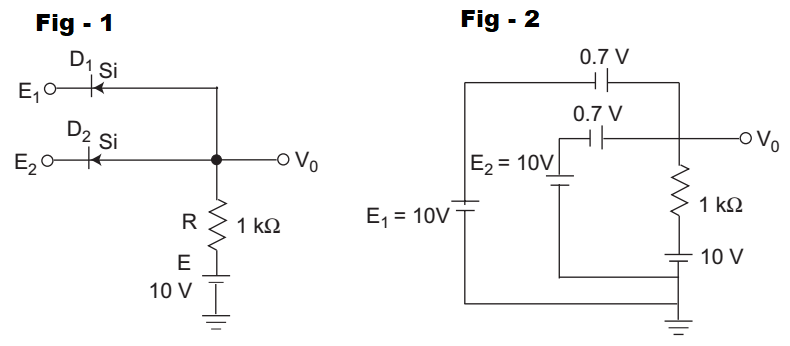Physical electronics devices and ics miscellaneous
- Determine ID2.—
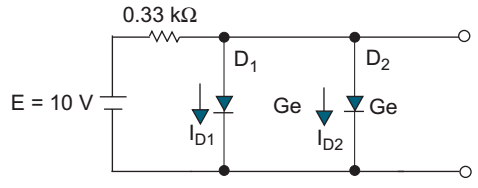
-
View Hint View Answer Discuss in Forum
From the given information, we can make the equivalent circuit as shown below:
From above circuit
ID = ID1 + ID2 (Also = ID1 = ID2)ID = (10 – 0.3) V = 29.40 mA 0.33 kΩ and ID2 = ID = 29.40 mA = 14.70 mA 2 2 and ID1 = ID = 29.40 mA = 14.70 mA 2 2 
Correct Option: C
From the given information, we can make the equivalent circuit as shown below:
From above circuit
ID = ID1 + ID2 (Also = ID1 = ID2)ID = (10 – 0.3) V = 29.40 mA 0.33 kΩ and ID2 = ID = 29.40 mA = 14.70 mA 2 2 and ID1 = ID = 29.40 mA = 14.70 mA 2 2 
- Determine ID1.—
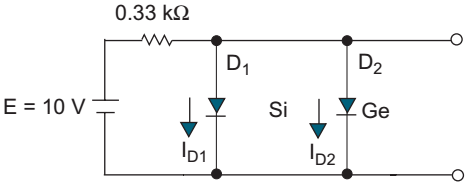
-
View Hint View Answer Discuss in Forum
Here, Ge diode ‘ON’ preventing Si diode from turning ‘ON’ as shown below in figure
Therefore, ID1 = 0 mA Hence alternative (A) is the correct choice.
Correct Option: A
Here, Ge diode ‘ON’ preventing Si diode from turning ‘ON’ as shown below in figure
Therefore, ID1 = 0 mA Hence alternative (A) is the correct choice.
- Determine ID2.—
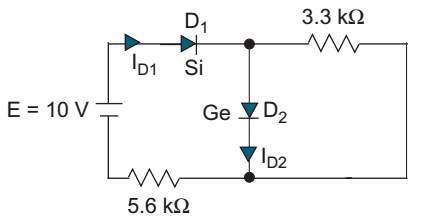
-
View Hint View Answer Discuss in Forum
From the given information, we can make the equivalent circuit as shown below:
From the above circuit KVL in loop 1
20–0.7 –0.3–5.6 kΩ × ID1 = 0ID1 = 19 V = 3.393 mA 5.6 kΩ and I3kΩ = 0.3 V = 0.09 mA 3.3 kΩ
So, ID2 = ID1 – I3kΩ = 3.303 mA
Correct Option: D
From the given information, we can make the equivalent circuit as shown below:
From the above circuit KVL in loop 1
20–0.7 –0.3–5.6 kΩ × ID1 = 0ID1 = 19 V = 3.393 mA 5.6 kΩ and I3kΩ = 0.3 V = 0.09 mA 3.3 kΩ
So, ID2 = ID1 – I3kΩ = 3.303 mA
- Determine the current through each diode if E1 = E2 = 0V.—
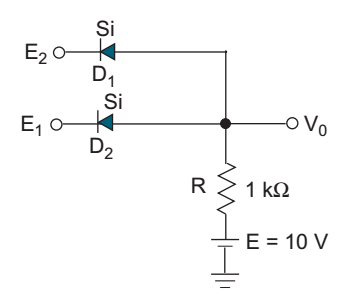
-
View Hint View Answer Discuss in Forum
From the given information we can make the equivalent circuit as shown below:
From below (i.e., fig-2) figure current through each diodeI = 10 - 0.7 = 9.3 mA 1 kΩ 
Correct Option: B
From the given information we can make the equivalent circuit as shown below:
From below (i.e., fig-2) figure current through each diodeI = 10 - 0.7 = 9.3 mA 1 kΩ 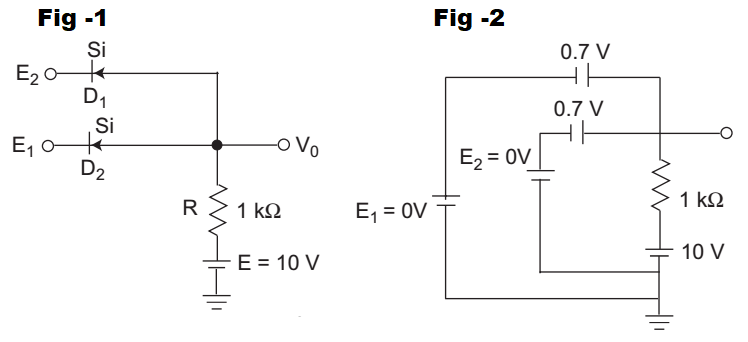
- Determine Vo if E1 = E2 = 10V—
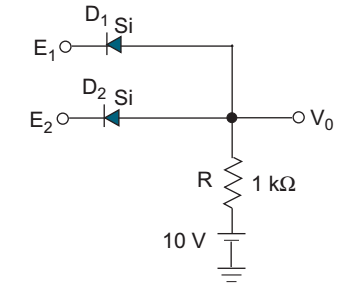
-
View Hint View Answer Discuss in Forum
From the given information we can make the equivalent circuit as shown below:
Both the diodes are open circuited due to reverse bias. It means there is no current in the circuit and there is no voltage drop in 1 kΩ resistance. Therefore, V0 = 10 V
Correct Option: B
From the given information we can make the equivalent circuit as shown below:
Both the diodes are open circuited due to reverse bias. It means there is no current in the circuit and there is no voltage drop in 1 kΩ resistance. Therefore, V0 = 10 V